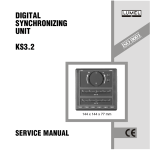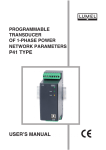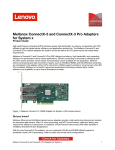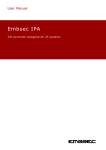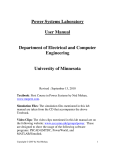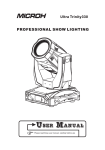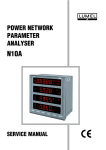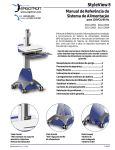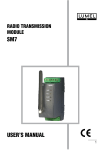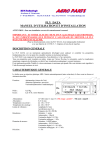Download DIGITAL SYNCHRONIZING UNIT KS3.1
Transcript
DIGITAL SYNCHRONIZING UNIT D E I F KS3.1 I T R E C 144 x 144 x 77 mm SERVICE MANUAL 1 CONTENTS 1. APPLICATION ................................................................................................................ 3 2. DELIVERY SPECIFICATION ......................................................................................... 3 3. BASIC SAFETY REQUIREMENTS AND USER´S SAFETY ......................................... 3 4. INSTALLATION .............................................................................................................. 4 4.1. Fixing way ................................................................................................................ 4 4.2. Scheme of external connections ............................................................................. 5 5. SERVICE OF THE KS3-1UNIT ...................................................................................... 6 5.1. Frontal plate ............................................................................................................. 6 5.2. Working modes of the KS3-1 synchronizing unit ..................................................... 6 5.2.1. Measuring functions of KS3-1 .............................................................................. 7 5.2.2. Error codes ........................................................................................................... 9 5.3. Configuration ............................................................................................................ 9 5.3.1. Configuration of S parameters .............................................................................. 10 5.3.2. Configuration of A parameters .............................................................................. 11 6. RS-485 INTERFACE ...................................................................................................... 13 6.1. Description ............................................................................................................... 13 6.2. Register map ............................................................................................................ 15 7. TECHNICAL DATA ......................................................................................................... 16 8. EXECUTION CODES AND ORDERING PROCEDURE ................................................ 19 9. MAINTENANCE AND WARRANTY ............................................................................... 20 2 1. APPLICATION The KS3-1 digital synchronizing unit is destined to synchronize generators during their coupling in parallel to the network or other generators working at the rated 50 or 60 Hz frequency. The full synchronization is obtained at the moment when follows the equalization of the voltage, frequency and phase angle. The phase angle, voltage and frequency differences of generator and network signals are shown on digital displays. At the synchronization moment, the zero or other values of the interval settled by the user, are shown on suitable displays. The unit has two relay outputs. One of the relay indicates the moment when the synchronization is reached, the second relay signals the measuring range exceeding of the selected quantity. 2. DELIVERY SPECIFICATION The KS3-1 synchronizing unit set includes: - KS3-1 synchronizing unit ........................................ 1pc - screw holders fixing the unit on a panel ................ 4pcs - service manual ....................................................... 1pc - warranty card .......................................................... 1pc 3. BASIC REQUIREMENTS AND USERS SAFETY KS3-1 digital synchronizing units are intended to be installed in panels, switchboards and cubicles. They are in conformity with IEC 1010+1-A1/A2 standard requirements. Remarks concerning safety: The unit installation should be carried out by a qualified staff. One must consider all accessible aspects of the protection. The instrument lefts the factory in perfect condition regarding technical safety. In order to maintain this condition and to ensure safe operation, the user must comply with indications and markings contained in the following instructions: Before mounting, ensure that the operating voltage and mains voltage set are the same, and then proceed with installation. The power supply must be connected as shown in the relevant diagram. 3 Before the switching on, check the correctness of meter connections. Before any maintenance and/or repairs, whenever the instrument must be opened, it must be disconnected from all power sources. Maintenance and/or repairs must be carried out only by a qualified authorized personnel. If there is ever the suspicion that safe use is no longer possible, the instrument must be taken out of service and precautions taken against accidental use. Operation is no longer safe when: - there is clearly visible damage, - the instrument no longer functions, - after lengthy storage in unfavorable conditions, - after serious damage incurred during transport. Operator safety The instrument described in this service manual is intended for use by properly trained staff only. Maintenance and/or repairs must be carried out only by authorized personnel. For proper, safe use of the instrument and for maintenance and/or repairs, it is essential that the persons instructed to carry out these procedures follow normal safety precautions. Precautions in case of breakdowns If it is suspected that the instrument is no longer safe, for example due to damage incurred during transport or use , it must be taken out of service and precautions taken to prevent accidental use. Contact authorized technicians for checks and any repairs. 4. INSTALLATION 4.1. Fixing way One should cut-out a hole of 138+0.5 x 138+0.5 mm dimensions in the panel and fix the synchronizing unit by means of four screw holders. The unit housing, which overall dimensions are 144 x 144 x 77 mm, is made of self-extinguishing plastics. The screw terminal strips enable the connection of external conductors which maximal cross-section is 2.5 mm2. 4 Fig. 1. Overall dimensions and fixing way of the KS3-1 unit 4.2. Scheme of external connections CAUTION: before connection check the phase sequence Fig. 2. Connection scheme 5 5. SERVICE OF THE KS3-1 UNIT 5.1. Frontal plate Fig. 3. View of the KS3-1 unit frontal plate 5.2. Working modes of the KS3-1 synchronizing unit. The KS3-1 synchronizing unit has 3 working modes (table 1) Name Mode Calling symbols Calling Input Output measuring Parameter configuration S In the configuration procedure after the last parameter Alarm configuration A In the configuration procedure after the last parameter After its switching on, the unit makes an autotest: 6 This sequence appears after each start of the instrument. The measurement mode starts after carrying out the tests. 5.2.1. Measurement functions of KS3-1. The KS3-1 synchronizing unit ensures the measurement of: RMS voltage and frequency in measuring channels of the network (UL1, fL1) and the generator (UL2, fL2), their difference: ∆ U= U L 2 − U L1 ⋅100 U L1 , ∆ f= f L 2 − f L1 ⋅100 f L1 and the phase angle (ϕ). It also enables the measurement of minimal and maximal voltages and frequencies. Voltages are multiplied by the given voltage ratio of measuring transformers set in the configuration mode. 7 KS3 KS3 max max max max min min min min Displaying of minimal and maximal values. Erasing by pressing the 8 key during their monitoring (e.g and next ). 5.2.2. Errors codes KS3 E 1 E 2 Voltage under 0.5 % Un error f, D U,D j f, Lack of min, max value definition SH -3 Unc U Unc U Calibration error Calibration values written in EEPROM are damaged. The unit need to be serviced. 5.3. Configuration In order to enter in the configuration mode one must press two keys: during ca 3 seconds, until the sound signal switching off. and 9 By means of and keys we change the display brightness. By means of and keys we choose the suitable mode: S or A and next we accept by pressing the key. The return to the measuring mode by pressing the or key after the last parameter. 5.3.1. Configuration of S parameters. The entry into the parameter configuration mode is protected by the access code. In case of the 0000 code, the asking for the password is omitted. If the access code is different from zero, there is only the possibility of the parameter reviewing. Table 2 Parameter name Symbol Range Description Manufacturing code (value) Entry of the access code* SECU 0000...9999 0000, without code 0000 Y/n n Setting of manufactu- rEST rer′s parameter Ratio of the voltage transformer tr_U 1...4000 1 Device address Addr 1...32 1 Baud rate bAUd 4800, 9600, 19200 9600 Type MODE 0...6 Access code SECU 0000...9999 Interface working mode: 0 - interface out 1 - Modbus ASCII 8N1 2 - Modbus ASCII 7E1 3 - Modbus ASCII 7O1 4 - Modbus RTU 8N2 5 - Modbus RTU 8E1 6 - Modbus RTU 8O1 0 Change of the access code 0 * If the access code has not been introduced, the position is not active. 10 By means of keys we set the required values, i.d.: the position of the decimal digit by means of the or key and the digit value by the key. The cursor signals the active position. The value is accepted by the the next parameter. After pressing the or key, after pressing we set key, we come back to the measuring mode. 5.3.2. Configuration of A parameters. Setting of synchronization alarm thresholds (on and off) settlement of the time delay. Table 3 Parameter name Symbol Range Remarks / Description Manufacturing code (value) Entry of the access code* Synchronization alarm output on switched on Alarm output access code* Synchronization alarm. Variation range of the voltage difference SECU A1_0 0000...9999 0.1 0000, without code 0 - off, 1 - on 0 0 A2_0 0.1 0 - off, 1 - on 1 A1_U 1 A1Ph 0.2...2 [%] m.v. 1...10 (for interface) step 0.2 [%] m.v. 2...5 [%] m.v. 11...13 (for interface) step 1 [%] m.v 1...10 [°] ALdt 0...10 sec. 0 Synchronization alarm Variation range of the angle Delay in alarm action Automatic activation AUtO of the alarm synchronization 0.1 delay of synchronization alarm switching on behaviour of the unit after a voltage decay * If the access code has not been introduced, the position is not active. m.v.: measured value 2 0 11 The entry into the mode of alarm setting is protected by the access code. Without this code, alarms can only be reviewed. Alarm outputs are active if the value 1 was assigned to them (Table 3, parameter 1, 2). If all values of the quantity related to the synchronization alarm are placed in the declared interval, then the two-state output (relay) is switched on, the SYN symbol is lighted and the AL1 message (if the AL1 relay has been activated) is displayed. If whichever of the quantity values goes out beyond declared alarm intervals, the two-state output will be switched off. Alarm 2 (OUT) will be switched on if measured values go out beyond measuring ranges. The value of the AUTO parameter equal 0 causes a lack of reaction in the synchronization moment after the switching on or the decay of the supplying voltage. To activate the signalling one must enter into the configuration procedure and next, resign of further modifications. The value 1 of the parameter causes the return to the automatic signalling, regardless of supply decays. 12 Supply switching on Display of max. values TEST - erasing Measurement mode Display of min. value Modification of displayed quantities - erasing 3 sec. Configuration Modification of display brightness S A Parameter mode Alarm mode After the last parameter After the last parameter Fig. 5. Working modes of the KS3-1 unit. 6. RS-485 INTERFACE 6.1. Description 32 devices can work on one bus in the RS-485 standard. Interface sockets ( 2 x DB9) are situated at rear of the housing. One must use a screened strand to make the connection. The screening is necessary and the length of the installation can not exceed 1200m. The hardware configuration defines the device number, the baud rate and parameters of the communication port. 13 RS485 KS3 KS3 PC 9 - pin connector CANNON 301W /0.25 W 5 Gnd 1.4 B 2.3 A Interface link Fig. 6. Connection way of the KS3-1 interface. Device number: Baud rate: Working mode: where: 1...32 4800, 9600, 19200 Kbit/sec 8N1, 7E1, 7O1, 8N2, 8E1, 8O1 N - no parity E - even parity O - odd parity An asynchronous character communication protocol MODBUS is used in the device. This protocol is a standard taken by producers of industrial controllers for the asynchronous, character exchange of information between devices of measuring and control systems. It possesses such features as: - simple access rule to the bus, based on the master-slave principle, - safeguard of transmitted messages against errors, - confirmation of remote command execution and signalling of errors, - efficient mechanisms to secure against the system suspension, - taking advantage of asynchronous character transmission. The information unit is the frame in ASCII or RTU code. 14 6.2. Register map Data are located in 16-bit or 32-bit registers in the KS3 - synchronizing unit. Process variables and meter parameters are located in the register address space in the way depended on the variable value type. Bits in the 16-bit register are numbered from the youngest to the oldest (b0 - b15). 32-bit registers include numbers of float type in the IEEE745 standard. The register map has been divided into following areas: Address range Value type Description 4000 - 4007 Integer (16 bits) The value is located in one 16-bit register. The table 5 includes the register description. Registers can be read out and written. 7500 - 7518 Float (32 bits) The value is located in one 32-bit register. The table 6 includes the register description. Registers can only be read out. Contents of 16-bit registers with addresses from 4000 to 4007. Register address Table 4 Symbol Unit, address Description address 4000 tr_U 1...4000 Voltage transformer ratio 4001 SECU 0...9999 Access code 4002 A1_0 0.1 Synchronization relay switching on 4003 A2_0 0.1 Range exceeding relay switching on 4004 A1_U 0...13 Settlement of the ∆V interval acc. table 3 4005 A1_Ph 0...10 Settlement of the ϕ interval acc. table 3 4006 Aldt 0...10 Delay of synchronization alarm switching on 4007 AUTO 0.1 Automatic activation A1_0 15 Table 5 Register address Symbol Unit Description address Network voltage 7500 U1 V 7501 U2 V Generator voltage 7502 f1 Hz Network working frequency 7503 f2 Hz Generator working frequency 7504 ∆U % Voltage difference 7505 ∆f % Frequency difference 7506 ∆ϕ ° (el) Phase angle 7507, 7508 minU1, maxU1 V 7509, 7510 minU2, maxU2 V Min. and max. value of the generator voltage 7511, 7512 minf1, max f2 Hz Min. and max. value of the network frequency Min. and max. value of the generator frequency Min. and max. value of the network voltage 7513, 7514 minf2, maxf2 Hz 7515, 7516 min∆U, max∆U % Min. and max. value of the voltage difference 7517, 7518 min∆f, max∆f % Min. and max. value of the frequency difference 7. TECHNICAL DATA • Measuring ranges and admissible basic errors Table 6 Measured quantity Range Basic error Notes Voltage Ui 100.0 V (Ku = 1) 110.0 V (Ku = 1) 230.0 V (Ku = 1) 400.0 V (Ku = 1) ±(0.2% m.v. +0.1% of range) Ku=1...400 max. Frequency f 15.0...500.0 Hz ± 0.5% m.v. +2d Voltage difference -20...0...20% ± 0.5% of m.v. + 2 d. 0.6% Unetwork Frequency difference -10...0...10% ± 0.5% of m.v. + 2 d. 0.3% fnetwork Phase angle 0...360° ± 1° 5° where: 16 Ku = voltage transformer ratio m.v. = measured values d. = digit Resolution - - • Measuring inputs - phase-to-phase input voltage - momentary overload capacity (5 sec) - admissible voltage peak factor • Interface RS-485 - baud rate - protocol • Relay outputs - relays - load capacity - life time depending on cosϕ • Reading field: - displays - colour - digit height • Supply voltage • Power consumption - supply voltage - voltage circuit • Reaction to decays and supply recoveries • Safety requirements - insulation ensured by the housing - insulation between circuits - installation category Un = 100, 110, 230, 400 V Frequency = 15...45...65...500 Hz sinusoidal signal (THD ≤ 8%) 2Un (max. 1000 V) 2 4800, 9600, 19200 MODBUS, ASCII 8N1,ASCII 7E1, ASCII 701, RTU 8N2, RTU 8E1, RTU 801 voltageless make contacts 250 V~ / 0.5 A~ in the AC1 category: 1.5 x 105, cosϕ = 1 105, cosϕ = 0.4, 250 V a.c. 4 x 5 fields, 7-segment LEDs red 14 mm 18...30 V d.c. a.c., 40...400 Hz 85...250 V d.c. a.c., 40...400 Hz ≤ 12 VA ≤ 0.5 VA Data and state preservation of the synchronization unit in case of any supply decay (battery support). Continuation of unit operation after the supply recovery. IEC 1010-1+A1 (1996) double basic III 17 - pollution degree - max. working voltage in relation to the earth 2 600 V a.c. • Housing protection degree - from the front side - from the rear side IP40 IP10 • Electromagnetic compatibility: - immunity - emission EN - 50082-2 (1996) EN - 50081-2 (1996) • Rated operational conditions: - input signal - ambient temperature - air relative humidity - external magnetic field Housing - frontal dimensions - panel cut-out - depth - weight - working position 18 0...0.01...1.2Un, for voltage frequency 15...45...65...500 Hz sinusoidal (THD ≤ 8%) 0...23...55° 25...95% (condensation inadmissible) 0...40...400 A/m 144 x 144 mm 138+0.5 x 138+0.5 mm 77mm 800 g (with packing) arbitrary 8. EXECUTION CODES AND ORDERING PROCEDURE Synchronizing unit - KS3 X Kind of display: - digital displays - bargraphs (diode lines) 1 2 Input voltage: 100 V 110 V 230 V 400 V on request, after agreement* XX X Table 7 X XX X 01 02 03 04 XX Digital output: - without interface - with RS-485 interface Supply voltage: 85...250 V d.c. a.c. 24 V d.c. a.c. on request, according order Execution: - standard execution - custom-made execution* Acceptance tests: - without additional requirements - with a quality inspection certificate - other requirements* 0 1 0 1 X 00 XX 0 1 X * The execution code will be settled by the manufacturer ORDERING EXAMPLE Code: KS3-1-01-1-0-00-1 means: a KS3-1 synchronizing unit with digital displays, input voltage: 100V, with an RS-485 interface, supply voltage 85...250 V d.c. a.c., standard execution, with a quality inspection certificate. 19 9. MAINTENANCE AND WARRANTY The KS3-1 synchronizing unit does not required any periodical maintenance. In case of some incorrect unit operation: 1. During the 18 months period from the shipment date: One should return the unit to the LUMELs Quality Control Dept. If the unit has been used in compliance with the instructions, LUMEL S.A. warrants to repair it free of charge. The disassembling of the unit housing causes the cancellation of the granted warranty. 2. After the warranty period: One should turn over the unit to repair it in a certified service workshop. Spart parts are available for the period of 10 years from the date of purchase. LUMEL S.A. reserves the right to make changes in design and specifications of any products as engineering advances or necessity requires. 20 SALES PROGRAM 1. DIGITAL AND BARGRAPH PANEL METERS 2. MEASURING TRANSDUCERS 3. ANALOG PANEL METERS (DIN INSTRUMENTS) 4. CONTROLLERS 5. PEN, DOT AND SCREEN RECORDERS 6. POWER CONTROL UNITS and INVERTERS 7. CAR INDICATORS 8. MEASUREMENT ACCESSORIES (shunts, sensors, C. T.) 9. MEASURING SYSTEMS (HEAT, ENERGY, CONTROL, etc.) 10.CUSTOM-MADE PRODUCTS 11.PRESSURE CASTINGS 12.TOOLS QUALITY PROCEDURES: According ISO 9001 international requirements. ISO certificate granted by KEMA Registered Quality. November 2001 Lubuskie Zak³ady Aparatów Elektrycznych LUMEL S.A. ul. Sulechowska 1 65-950 Zielona Góra, POLAND tel. (48-68) 329 51 00 (exchange) fax: (48-68) 329 51 01 e-mail: [email protected] http//www.lumel.com.pl Export Department: tel. or fax (48-68) 325 40 91 e-mail: [email protected] 21





















